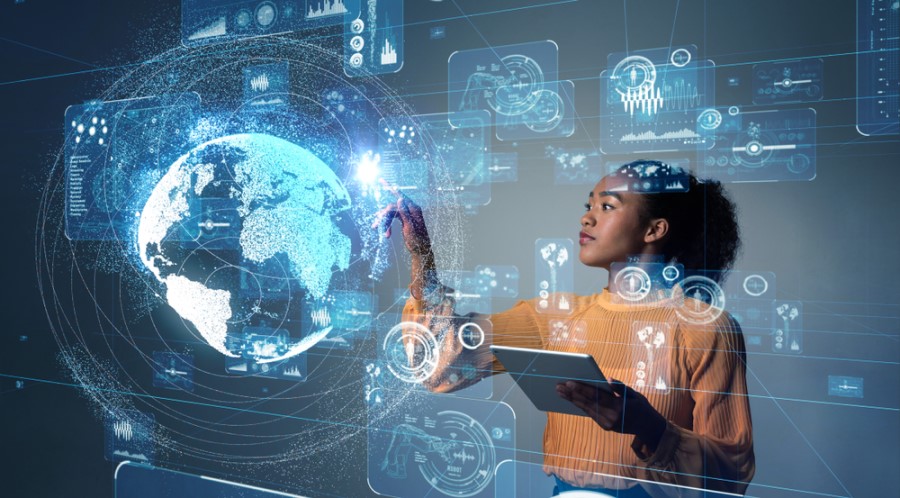How to use benefits technology to make the employee experience more personal

When we think about making employee experience more personal – particularly through the lens of benefits tech – it’s easy to go too far one way or the other. For instance, a tech provider who says they can offer ‘personalised benefits suggestions’ for your entire workforce will likely be relying on generational stereotyping. But, on the other end of the spectrum, a solution for personalisation on person-by-person basis is impossible for any company with 10+ employees. Technology is the natural solution: real personalisation, en masse.
Personalised benefits suggestions
There are two main ways that technology will impact employee experience: the first is within employee benefits – specifically, artificial intelligence and machine-learning.
One of the greatest examples of personalisation through technology is in the retail and social media space. These industries have been utilising hyper-personalisation for years – for example, Amazon’s ‘recommended for you’ section, and targeted adverts on Instagram or Facebook which show an advert for something you recently Googled. What’s to say employee benefits can’t use the same principles of personalisation, and use these to deliver targeted, relevant, helpful suggestions?
If you have a huge range of benefits on offer, which cater for the wants and needs of a broad demographic, the ability to personalise your offering can get lost. With technology, your benefits scheme can sit in an intelligent platform which still offers everything to every employee, but is also clever enough to make personalised suggestions, push relevant recommendations and steer employees towards a healthy decision.
For a long time, benefits were offered to employees with sweeping assumptions. Providers assumed all employees’ lives followed the same cycle – employment, marriage, start a family, retirement… But today, employers and providers alike realise that there is no such thing as a ‘typical’ employee. If we focus our personalisation technology on behaviours rather than employee characteristics alone, employers can offer personalised suggestions which are actually relevant to the employee in question, and avoid stereotyping altogether.
Chatbots and AI for wellbeing and decisions
When we say chatbots, many people simply roll their eyes, but the undeniable truth is that in our lifetime we will see chatbots becoming a significant part of the employee experience. One particular area of this is in decision-making and employee wellbeing.
Lots of companies are doing amazing things with wellbeing and artificial intelligence – from detecting early warning signs of heart disease, to assessing the mental wellbeing of a workforce and flagging potential risks for mental illness. While, in an ideal world, employers would be able to be there for every employee to keep an eye on them, the reality is that many HR teams are stretched too thin. When it comes to casting a wider net and assessing the wider health of your workforce, AI can be the trawler you need.
Already, wellbeing chatbots exist to provide support, a listening ear and coping techniques to help people struggling with their mental health. Some of the most successful wellbeing chatbots are powered by machine-learning, comprehensive copy, and knowledge of professional counselling practises. While most acknowledge they are in no way a replacement for professional help, these systems provide a non-judgemental listener to people who may otherwise remain isolated, or feel unable to reach out. Of course, these should all point back to professional help, and support from an HR department, but why can’t an AI-powered chatbot support your employee assistance programme?
One of the main reasons these kind of wellbeing chatbots have taken off is their lack of judgement – a chatbot will never laugh at you for being anxious, or say you’re overreacting to something. It is a safe space. That non-judgmental space is also why similar decision-making bots are the next natural step. Why can’t organisations offer a workplace decision-bot? An advice bot for when HR feels too daunting, or your questions seems too silly. Why can’t we have a friendly chatbot on our benefits portal to help explain complex financial queries or give breakdowns of policy documents? It may seem far off now, but chatbots have a place in the future of work.
Final thoughts
The key aspect of any employee experience is that it is purposeful – everyone has an employee experience, the difference is simply in whether it has been designed or not. While chatbots and personalised recommendations for every employee may seem like a daydream right now, they are coming our way, and employers can’t risk being left behind. Technology offers a powerful ally in personalisation and designing that experience as a mass scale – so keep up, because your employees certainly will.
This article is provided by Benefex.
Supplied by REBA Associate Member, Benifex
The home of award-winning employee benefits, reward, recognition, & communications.







